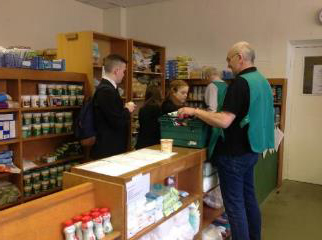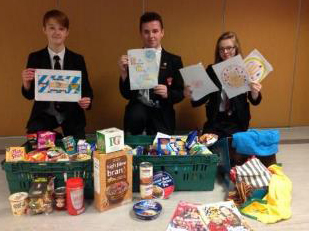STEM skills have been a major focus in education for over a decade and more young people are taking science, technology, engineering, and maths subjects at university than ever before, according to statistics published by UCAS. The downside of this is that the UK is now facing a soft skills crisis and the modern world will also require children to develop strong social skills as the workplaces are transformed by technology.
Here is an example of our first grade 3-5 STEAM challenge to intentionally use the Makerspace and teach students important 21st-century “c words” skills.
This article is brought to you by the letter C. As I started drafting out how I would tackle writing about 21st Century Learning Skills (often referred to as the ‘5 Cs’ or ‘soft skills’), at the same time I am starting my summer holidays, (my last day of teaching was June 28th), Sesame Street popped into my head. I noticed that my summer mode was significantly different than my teaching mode and that when I stopped to actually compare the 2 modes- there was a distinct pattern of “c words” in both modes.
Music education often doesn’t reflect the reality of how young people are engaging with music in their spare time. 97% of young people listen to music every week; and two-thirds say they’re regularly making music. Despite this, around 93% of students in KS3 don’t choose music as a GCSE. These statistics say that classroom music isn’t resonating with many young musical people. We need to look for new ways to open the door and bring a more diverse range of genres into the classroom.
Ofsted is currently consulting on its proposed new inspection framework – the draft was published on 16th January with the consultation running until 5th April. The draft framework includes some strong indications that music and creativity will be firmly back on the radar of Ofsted inspectors from September this year. If schools want to achieve Good or Outstanding ratings, they are going to have to teach the full curriculum, right through years 3 – 6 at key stage 2 and throughout years 7 – 9 at key stage 3.
Online and in print, there is a lot of idealising about nurturing niceness and educating ‘the whole child’. But at the sharp edge in schools, when teachers are busy and pressured to provide results (test scores that is), what can realistically happen? Values and ethics reduced to a snappy slogan on the walls of the hall? Positive characteristics and traits referred to in a school mission statement but never in lessons? Sanctions imposed for negative behaviours but little recognition for positive? Rewards reserved for classwork and achievement?
In the same way that children need to be taught how to hold a knife and fork, tie shoelaces or do long division, so too are empathy, kindness, benevolence and charity traits that need to be taught. Yet where do we reward students for being kind and not just clever? Where do we praise schools for educating hearts and not just minds?
When asked “What is education for?”, the answer “passing tests” is not always at the top of list. Instead, teachers often cite ‘holistic outcomes’, citizenship development and rich understanding of knowledge in context - not just a list of rote-learned facts - as key ambitions.
But there is little reward for schools or students who achieve these holistic aims. Although evidence of healthy SMSC and British Values provision contributes to an inspection outcome, Ofsted’s criteria largely hang on exam results. Progress 8 looks at points from qualifications. SATs tests define a child’s Primary school achievements. Teacher assessment and reporting to parents leans heavily on levels.
How can we turn this system on its head? By innovating our routines and protocols. Happy children achieve more, kindness breeds kindness. Although ‘behaviour’ can be a key concern in school development plans, there is a difference between students not being naughty and being actively kind.

One method I’ve implemented had me standing up to present an assembly in front of Years 7, 8 and 9, playing a YouTube video called ‘random acts of kindness’ and then challenging students to conduct their own over the six-week half term. Media Studies students also created a video to show in form time.
The next half term we went a step further. On the first Monday back after the holidays, the school council and I went into school two hours early in order to (in the words of executive principal Dave Whittaker) “batter the school with kindness”. ‘Thank you’ notes left for cleaners and caretakers. Flowers in the reception. Fifty pence pieces sellotaped to the vendors, sweeties left in the staffroom, compliments stuck to windows. Free umbrellas for the rain, new pencil cases for the new starters, ‘you’re the best’ badges for the dinner ladies. Balloons dropped off at the nursery, handing Murray Mints to the arriving bus drivers, and a car cleaning service offered in the car park. The list was extensive, and I’ve forgotten a few I’m sure, but the buzz was tangible.
With the school council driving the agenda, students let their imaginations run wild with the kindness drive. A school charity was formed - ‘The Helping Hand’ - and projects dreamed up. Age UK and Yorkshire Air Ambulance visited the school, collections and visits to local food banks were run... It was a beautiful blooming of positive deeds, and served to remind staff and students: ‘It’s nice to be nice’.
Other projects/ideas to promote kindness in schools:
The results were striking. There were 100s of recorded and rewarded acts of kindness. Students could see them, staff could see them, and we could all feel them.

Here are just some acts of kindness by students recorded by staff over two half terms [this is a fraction of the acts Paul sent in! - Editor]:
Where is the kindness in your curriculum? Make this year the year to be nice. World Kindness Day is November 13th 2018, and Random Acts of Kindness days can be run throughout the year, so get planning!
Want to receive cutting-edge insights from leading educators each week? Sign up to our Community Update and be part of the action!
We are poised on the brink of a new industrial revolution. In December 2017, McKinsey Global Institute produced a detailed report entitled ‘Jobs lost, jobs gained: workforce transitions in a time of automation’, in which they presented a proposition that by 2030 robots could have replaced 800 million jobs. They look at the impact of this on the labour market - what jobs will be likely to be automated, by AI or robots, and which new types of jobs will be created. In essence, they have analysed which human-driven occupations will thrive and which will disappear. Although no predictions at this stage can be 100% accurate, as educators, we want to know how to best prepare our children for these seismic changes.

A community-driven platform for showcasing the latest innovations and voices in schools
Pioneer House
North Road
Ellesmere Port
CH65 1AD
United Kingdom